Eruption
andErosion
SciencetellsusadifferentstoryoftheIguazúFalls.About130millionyearsago,thesupercontinentGondwanabrokeapart.SouthAmericaseparatedfromAfrica.Thistriggeredoneofthelargestvolcanicevents in history.
Atthetime,theareawasagiantdesert.Lavapouredfromvolcanoes,coveringthedesert.Asitcooledandhardened,itbuiltuplayersofbasalt rock.

Waterfallsareformedasariverflowsfromhardrocktosoft rock.
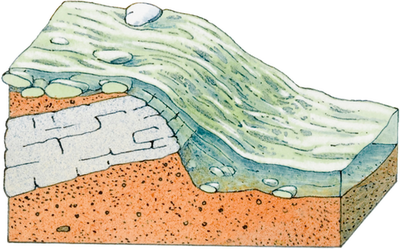
Therivererodesthesoftrockatafasterrate.Itformsastepinthe river bed.
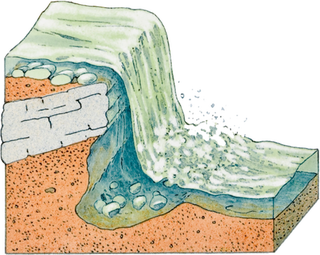
Thehardrockthatisleftcreatesahardledge.Theriverfallsoverthe ledge.
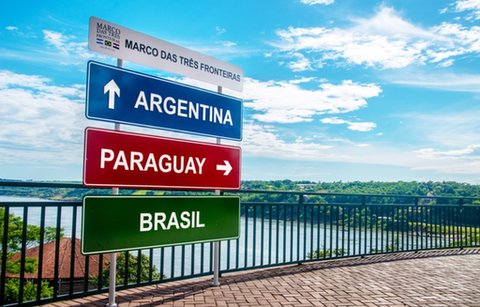
TheIguazúRiveremptiesintotheParanáRiver.ThisiswherethebordersofBrazil,Argentina,andParaguaymeet.TheareaisknownastheTriple Frontier.
Earth’splateskeptmoving.Thelayerswereliftedintoahighplateau.Faults,orcracks,appearedinthem.Waterrunningdownthefaultseroded,orworeaway,theland.TheParanáriverbedformed.Later,theIguazúRiverappeared,feedinginto it.
Thefallsformedatthesitewherethesetworiversmeet.Today,theyarefartherupstream.Erosiongetsthecredit.Aswaterfellintotheriverfromtheplateau,itweatheredawayrockonthebottom.Theupperlayers crumbled.
Today,thelayersofthefallslooklikeagiantstaircase.Erosioncontinues.Thecanyongetsabout3millimeters
(0.1inches)longereach year.
Brazil
Argentina
Paraná
Iguazú
Paraguay
IntotheRainforest
ThewaterisjustpartofthebeautythatsurroundsIguazúFalls.TheyexistinthesubtropicalAtlanticForest.ItisoneofthemostbiodiverseecosystemsinSouthAmerica.Itishometomorethan2,000plantspecies,plusmammals,birds,reptiles,andamphibians.Manyoftheplantsandanimalsthatliveherearen’tfoundanywhereelseinthe world.
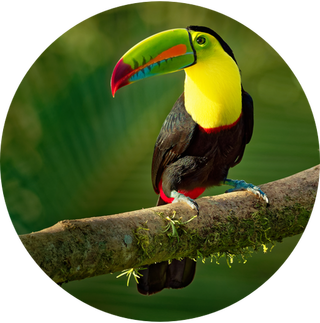
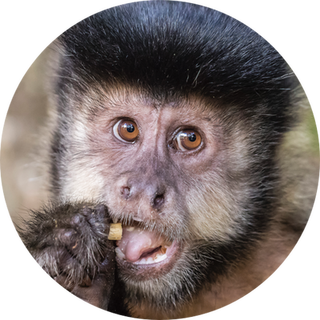
blackcapuchin monkey
toucan

Bewareofthecoatis!Theycaneasilybiteyourhandwhentheytrytograbyour food.
AsIwalkedthroughtherainforest,Isawtallpalmtreesandeventallerrosewoods.Papayafruithungfromsmalltreesunderhuge leaves.
Bluemorphobutterfliesflutteredthroughtheair.Ialsocaughtaglimpseofatoucaninflightandmonkeysinthetrees.Igotagoodviewofayoungcaiman.Raccoon-likecoatisseemedtobeeverywhere!Ikeptaneyeoutforjaguars.Theylivehere, too.